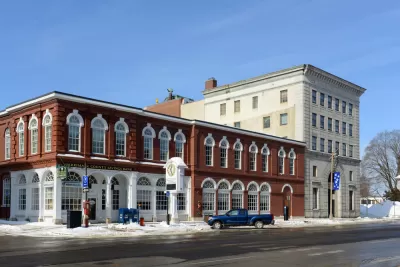Architects are uniquely positioned to reduce global warming, argues the CEO of Urban Green Council—but first they need to rethink their role.

Urban Green Council, a New York City-based nonprofit, seeks to make cities more sustainable by improving their building stock. Since it was founded in 2002, the organization has played an important part in the development of ambitious government policies in its hometown. One of these, Local Law 97, broke new ground in climate legislation earlier this year by setting carbon emissions caps for buildings over 25,000 square feet.
In an interview with The Architectural League of New York, Urban Green CEO John Mandyck says that architects have a critical role to play in reducing building emissions, but that to realize this potential, they need to shift from designing new buildings to retrofitting existing structures, as well as educating owners about the benefits of green design—and the risks associated with inaction.
"I think the market completely overlooks the fact that New York has $3 trillion of insured coastal properties. That’s twice the GDP of Canada," he said. "From a value preservation standpoint, we have a lot at stake in the existing built environment that is completely at risk to climate change. Architects can help building owners understand the economic benefits of a low-carbon building in a way that others may not be able to do."
FULL STORY: To combat climate change, focus on existing buildings

Planetizen Federal Action Tracker
A weekly monitor of how Trump’s orders and actions are impacting planners and planning in America.

Maui's Vacation Rental Debate Turns Ugly
Verbal attacks, misinformation campaigns and fistfights plague a high-stakes debate to convert thousands of vacation rentals into long-term housing.

San Francisco Suspends Traffic Calming Amidst Record Deaths
Citing “a challenging fiscal landscape,” the city will cease the program on the heels of 42 traffic deaths, including 24 pedestrians.

Amtrak Rolls Out New Orleans to Alabama “Mardi Gras” Train
The new service will operate morning and evening departures between Mobile and New Orleans.

The Subversive Car-Free Guide to Trump's Great American Road Trip
Car-free ways to access Chicagoland’s best tourist attractions.

San Antonio and Austin are Fusing Into one Massive Megaregion
The region spanning the two central Texas cities is growing fast, posing challenges for local infrastructure and water supplies.
Urban Design for Planners 1: Software Tools
This six-course series explores essential urban design concepts using open source software and equips planners with the tools they need to participate fully in the urban design process.
Planning for Universal Design
Learn the tools for implementing Universal Design in planning regulations.
Heyer Gruel & Associates PA
JM Goldson LLC
Custer County Colorado
City of Camden Redevelopment Agency
City of Astoria
Transportation Research & Education Center (TREC) at Portland State University
Jefferson Parish Government
Camden Redevelopment Agency
City of Claremont





























